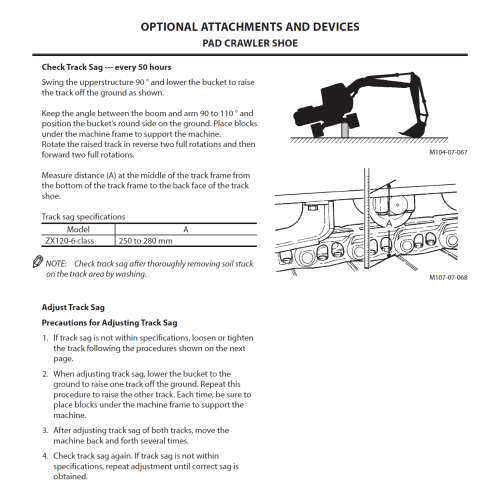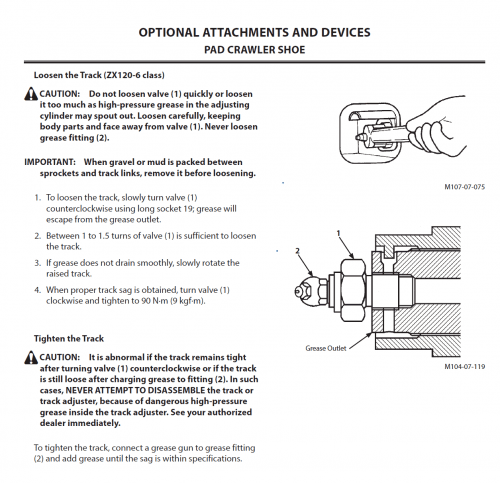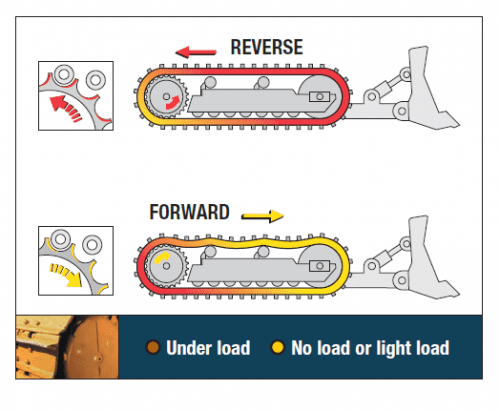![]() Added to Basket
Added to Basket
![]() Added to Basket
Added to Basket
Monday, April 27, 2020
Vast improvements and developments have taken place with hydraulic excavators since my career with construction equipment began, back in the mid 1970’s; improved efficiency, productivity and reliability to name but a few.
Today’s machine bears little resemblance to the UH052, and less to the Hy-mac 580c, a JCB 807, or a Mustang 120, along with a sprinkling of Poclain’s and so on, popular, and cutting-edge kit back in the day.
One of the major improvements is travel speed, which has increased as a result of market demand, and the excavator becoming more universal and often used for operations other than excavating. Over 95% of Hitachi midsize excavators are delivered with quick couplers, allowing effortless and swift changes of buckets and a plethora of attachments. We all regularly see midsize machines distributing materials around the typical site, and on some of the larger housing developments the distances travelled can be huge. We often see machines having recorded in excess of 1200 miles of travel. That is the same distance from John O’Groats to Lands’ End and halfway back again!
Undercarriage and track components are wear items, and if we are to maximise their useful life and meet the demands and evolving methods on today’s site, track maintenance is essential.
Here is some advice on how to perform essential maintenance and best practice:
Track Tension
Often overlooked and the major contributory factor of premature component wear. If the track tension is too tight, the effort required to drive the track increases significantly, along with the load and friction forces between the rotating surfaces of the components. The increased fiction will accelerate wear and drastically reduce the component life. Remember as a child repairing a puncture on the rear wheel of your bicycle, then refitting the chain too tightly, recall the extra effort required to pedal off down the road! The same forces are at work.
If the tracks are too loose, they can also affect wear; they will give an uncomfortable ride and you run the risk of losing a track.
Here we have the proper method to check the track tension on the Hitachi mid-range excavator.




The measurements relate to the ZX130-6 model. The measurements for all models can be found in the rear of the operators manual. Notice that the range between too tight and too loose is only 30 millimetres, one shot from the grease gun can equate to 10 millimetres, so care needs to be taken when setting the correct tension. The setting can also alter with ground conditions. Shale like materials can compact in the chains increasing the tension. If this goes unnoticed or ignored, accelerated wear of the components will occur and reduce their life. Adjustments need to be made in line with changing ground conditions.
Reverse Travel
Try to keep reverse travel to a minimum. The loads upon the components in reverse travel is considerably higher than forward travel, increasing friction and rapid premature wear. Some sites can be very tight, and it is very tempting to place your feet on the travel pedals at their base, and travel in reverse. Always try to travel in the forward direction or expect reduced component lifetimes.


> How the machine is operated can affect undercarriage component wear – By using intelligent operating procedures, you can extend the life of the undercarriage.
> Limit nonproductive, high-speed travel – High-speed operation accelerates wear on all undercarriage components. Track wear is directly proportional to speed. Speed equals stress. The distance a track machine travels determines wear. Plan your jobsite work carefully to make travel productive.
> Limit reverse operation – Reverse operation accelerates wear on the reverse-drive side of the track bushing and sprocket teeth. The only time bushings rotate against sprocket teeth under load is during reverse operation.
During reverse operation, approximately 75% of pins and bushings are under contact, load, and motion, from the bottom of the front idler to the first pin and bushing joint engaged by the sprocket tooth. Forward operation puts about 25% of the pin and bushing joints under contact, load, and motion. Reverse operation greatly increases load between the pins, bushings, and sprocket teeth, and between the track links, idler tread surface, and carrier roller, greatly accelerating the wear rate between these components.
Track Housekeeping
The track frames on Hitachi excavators are designed to allow mud, silt, clay and alike to drop back down to the ground. However, by nature of a track type drive system and site conditions, it is inevitable that materials will collect on surfaces of the frame. This needs to be cleaned our and removed on a regular basis. If left to accumulate, the top rollers can become restricted in their ability to roll freely as the track chain passes over. This can lead to flat spots on the roller circumference, which will eventually completely lose its ability to rotate. This will not only render the roller beyond further use, it will also cause heavy wear on the chain rail as it passes over the flat spot of the stationary roller, reducing the component life of the chain. Excessive material on the frame can also pack the track chain between the bushes and increase the track tension, again detrimental to track life as previously detailed.
By following the advice, maintaining the correct tension, minimise reverse travel and keeping the frame as clean as can be, you will maximise the undercarriage components.
Derek Humphries – National Technical Manager (HCMUK)